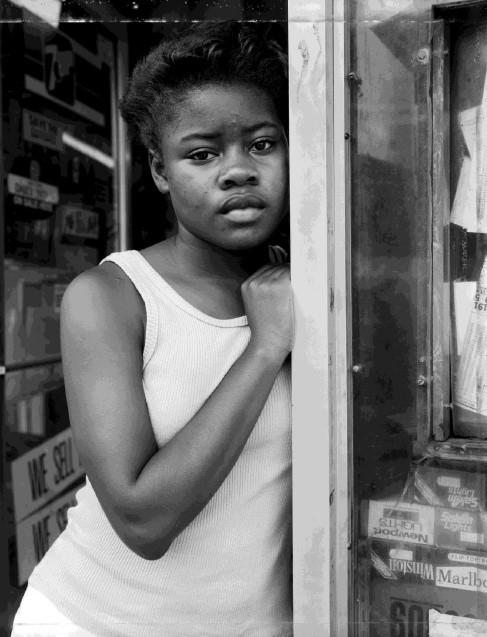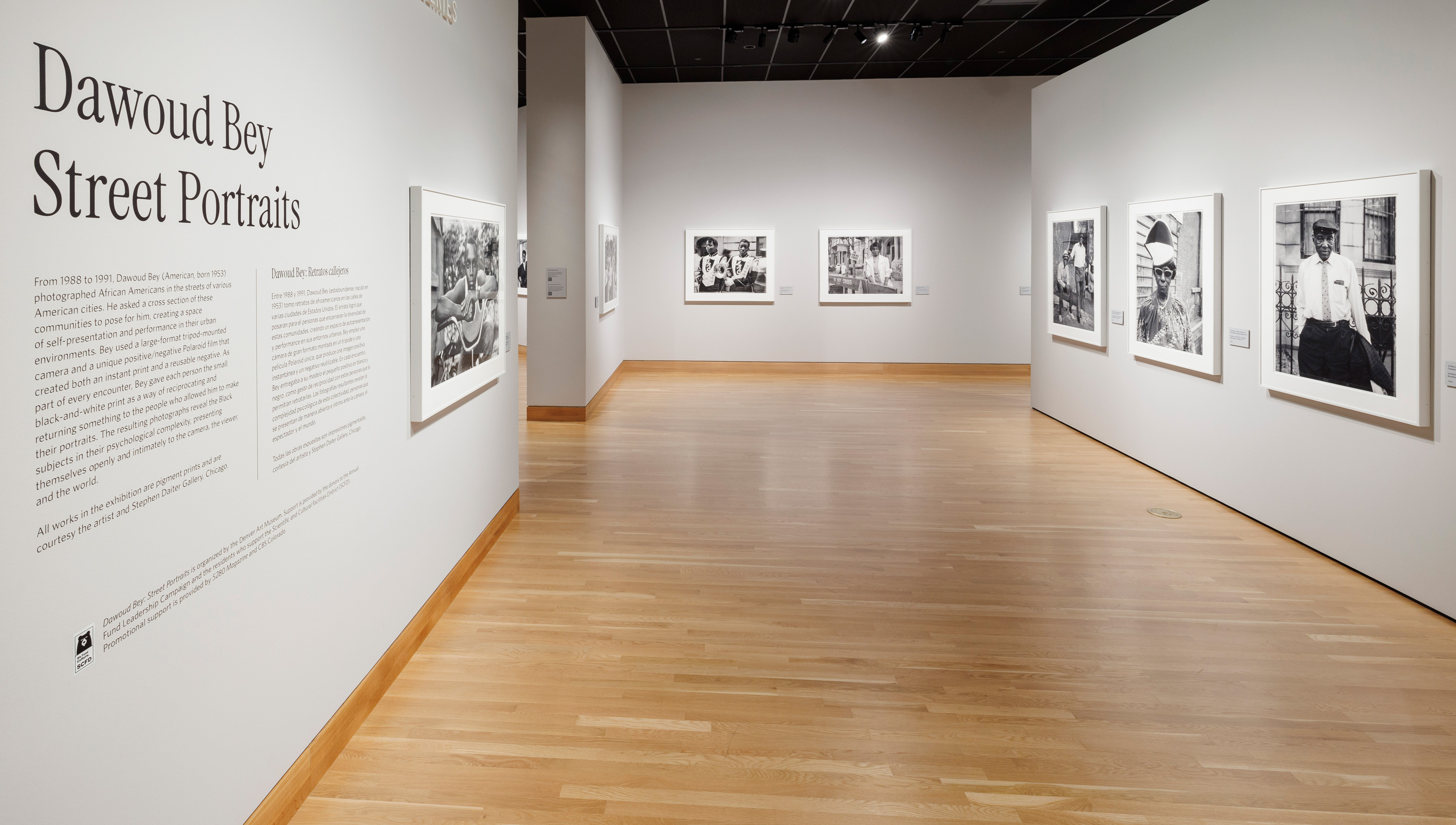There’s a scene in Ferris Bueller’s Day Off where friends Ferris, Sloan, and Cameron visit the Art Institute of Chicago after taking a “mental health day” from school. While there Cameron stands in front of Georges Seurat's A Sunday on La Grande Jatte. There he stands transfixed, completely taken in by the painting and one little girl. While everyone else in this painting is turned away from us, only she keeps her eyes forward. They stared at each other, his and her eyes unblinking, with each second giving way to many realizations for him. He doesn’t fit in, he’s different, he doesn’t know how to belong. He sees so much of himself in her. He sees in her someone he wants to be. Someone bold enough to not fit in. To defy the others by being themselves. This was a moment from a favorite movie of mine that I never quite understood. Until now what happened to Cameron was a mystery to me. I loved the music. I loved the moment. I just never got it.
That is, until I was ugly crying in an art museum.
My school sponsors a slew of events throughout the semester, and I was lucky enough to snag a spot on a trip to the Denver Art Museum. I. Was. Pumped. I’d always wanted to go to a real art museum, stare at a painting I didn’t understand, put my hand on my chin, and go hmmm. A stranger would walk up, and we’d discuss the piece and how it made us feel. What was the artist trying to convey? It’s what you do.
I imagined giant paintings of pastures and women in big dresses. I was going to see Queen Charlotte—in person, in the flesh...well, painted. I was thrilled.
I was also resigned to what I might see in the way of Black people, and our portrayal in museums. I know it’s history—but when you only ever see yourself presented a certain way, by a certain group of people, you become rather jaded.
I was already tired of what I was sure I’d find, stereotypical narratives, slavery, domestic servitude. I already “knew”—but I was excited all the same.
Our guide was eager to begin the tour, but said we had to start with a photography exhibit first. She promised we’d never seen anything like it. The exhibit: Street Portraits. The artist: Dawoud Bey. She was right. I had never seen anything like it.
The exhibit (on view at the DAM November 17, 2024–May 11, 2025) consisted of 37 portraits, all taken between 1988 and 1991. They are a marvel.
As we walked through, we learned about Dawoud Bey—his name and why he changed it, where he was born, his early love of music, and his dream of being a musician before receiving his first camera at fifteen. Each piece of information formed a clearer picture of the man behind the lens.
This man told his subjects to look directly into the camera. No fear. No resignation. Only presence. A man who may have seen the lack of proper representation—and decided to be the solution.
I was struck by the fits. Everyone in the photos looked so stylish, so put-together. Even our guide commented on it. In my head, I laughed a little. I could hear my mom saying, “Y’all can’t just go out looking any kind of way.” It was a form of protection and I wondered if their moms had given them that talk too.
I looked into the eyes of people living their lives. Going about their day. Just being. I saw couples on dates, children on stoops. A young man posing with his wave brush. A little boy with a foxy pop.
They were just being. And I loved it.
I rejoined the group in another row. I walked up just as our guide asked about a photo I couldn’t yet see. I reached the front of the group as she said, “Now what do we think of this one? What do we think this young lady is feeling? What do we think her life is like?”
I stepped forward—and there she was.
I was not prepared.
Her gaze tore through me. I saw so many things in her. So many stories. I saw longing. A plan for something different.
A hope for something more. I saw guilt for wanting to leave. I saw resolve. I saw resignation. She looked like she was taking a brief respite from work, trying to breathe before going back in. I tried to build her story in my head—but I saw too much. I think I saw more than she meant to show.

Dawoud Bey, A Young Woman in a Deli Doorway, Brooklyn, NY, from the series Street Portraits, 1988. Pigment print. Courtesy the artist and Stephen Daiter Gallery, Chicago. © Dawoud Bey
I turned away, locking eyes with another portrait. Then another. Clear, steady eyes stared back—until suddenly, it was suddenly all too much.
Now they saw too much.
Even as I tried to stop it, I knew it was coming. Tears.
Now, I am not much of a crier—especially not in public. This is why I don’t watch Pixar movies in theaters anymore. (Looking at you, Up.)
I was feeling too much. And I was feeling it everywhere.
I needed to escape. I tried to discreetly step away from the group—but I ran straight into another museum guide. She took one look at me, and instantly knew. She led me to a quiet corner, sat with me, and asked if I was okay. She wanted to know why I was sad.
But I wasn’t sad.
I was relieved.
I had entered the museum with certain expectations—of what I would see, of how Black people would be portrayed.
What I found was so much more than I could have dreamed. It was just being. Just existing. Ordinary. Extraordinary.
Us.
I didn’t know how to say all of that. I was still ugly crying in front of a stranger. Well—not a stranger anymore. (Hi, Ms. H!). She stayed until I was calm and made sure I was okay before I left. I decided to walk the other rooms alone for a while. I needed to be whole again—to face her again. To face them.
After the break, we were given 90 minutes of free time. I spent it all with her.
I sat near her photo as others passed, some who skimmed quickly and others who lingered. I listened to their musings, wondering if they could also see the stories in her eyes. I sat until my time was up.
As I got up to leave I felt like I should introduce myself. I also felt like a dork but I did it anyway.
I had spent the day with her. Since I couldn’t ask her name, I gave her mine.
I really wanted to take her home. But that’s illegal. I checked.
So I did the next best thing—I bought the book. I felt so proud at the joy and pride displayed in the portraits. Flipping through the pages, seeing these faces at all stages of life made me feel honored in getting to view them. I took them all home. And I couldn’t be happier.
Seeing the different stories in the book reminded me of a TED Talk by Chimamanda Ngozi Adichie called The Danger of a Single Story. She speaks on the dangers of only knowing these single stereotypical stories about any one group of people, how it limits us and creates misconceptions. She spoke on how she too was susceptible. I thought back on my earlier mindset and the expectations of narratives I did not want but was resigned to see.
Was I also too used to what I’ve seen portrayed of us that I could not see outside of that single narrative?
I listened to others who passed these portraits today and wondered about the single stories they may have known. I watched as these portraits changed those single stories into many new, nuanced ones. Stories that showed we're out here living our complete and genuine lives away from those widely spread narratives that even I was accustomed to. I thought I knew the single story I would see there. I had prepared myself for that reality. I was so happy to have known nothing. I was so very happy to be wrong.


